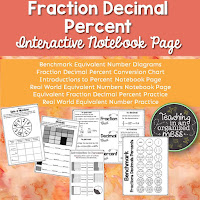This is a buzz word in teaching right now.
Treat Yo Self, right? However, no amount of manicures, massages, Netflix binge, or sleeping in will help if you aren't setting limits for yourself at work.
Teaching is a stressful job. Teachers plan a lesson, and then differentiate for their students it. These are ways that I have found to practice self-care myself.
1. Say No or Don't Volunteer
It is extremely hard for me to say no OR to even sit in a meeting where someone is asking for volunteers and to not speak up. But! I am not Wonder Women! I cannot do it all, and I am more and more willing to realize when my plate is full and pass when I need to.
2. Don't reinvent the wheel
There are lots of resources out there just waiting for you to use them! Now, best practice is to not just find activities to fill the time you have with students. The things you plan for your students need to have a purpose and truly help your students meet their learning targets.
Where to find resources? My favorite place? Twitter--especially if you are a math teacher. The #mtbos or #iteachmath community has lots of helpful teachers from all over the country. Another place? The teacher down the hall. If you have other teachers at your school teaching the same subject and grade level, you should be planning together. It should make both your lives easier.
3. Focus on a few things a year to work on
I know I start every year with a long list of things I want to learn and conquer. It never works out that I can do it all. And when November hits, I just feel guilty that I haven't done better. Instead, pick 1-3 things you can improve on in a year.
4. Ask for help
Again--that teacher down the hall, twitter, your team leader, your spouse, your friend, your mom...you are teaching the future! Everyone should pitch in. In addition to this, stop spending your money! Unless it truly bring you joy to spend your money, find ways to get things donated, ask your principal, use Donors Choose, or don't buy it. There is probably a free way to do what you are trying to do.
5. Don't take it personally
My first year, I took every misbehavior so personally. I came home physically and mentally exhausted. I remember coming home, sitting on the couch, and not moving until it was time to go to bed.
My second year I realized that these little people were still learning how to treat others and were developing their personalities. Looking at it from this point of view, I didn't take their misbehavior personally and instead saw it as an opportunity to teach them. I also got much better at establishing procedures and expectations in my classroom.
6. Find the thing that reduces your stress
My thing? Laying on the floor and letting my kids hug me and climb all over me. Instant stress reducer. Also a good nap.
Your thing might be chocolate bar, a night out with friends, a massage, or a long run. These things shouldn't be the only way to practice self-care, but can be part of your plan!
7. Speak up for yourself
I added this one last after a particularly bad day. I haven't completed this step yet, because this is the hardest for me. We have to be willing to speak up for ourselves and say when something isn't right (or illegal), or causing us stress when it doesn't need to be. In my case, I have a responsibility that is causing me stress and anxiety. It is something that can probably be fixed but....I have to speak up for myself. This risks me looking whiny, ungrateful, not a team player, etc. In fact, I have spoken up in the past at other campuses and it not gone well initially. So I have decided to speak up, or stay silent and hope it changes next year.
All those teachers that have gone on strike have practiced this bit of self-care. They are willing to fight for public education and for better working conditions and pay and speak up for themselves and their colleagues.
How do you practice self-care? Anything I missed?




















































